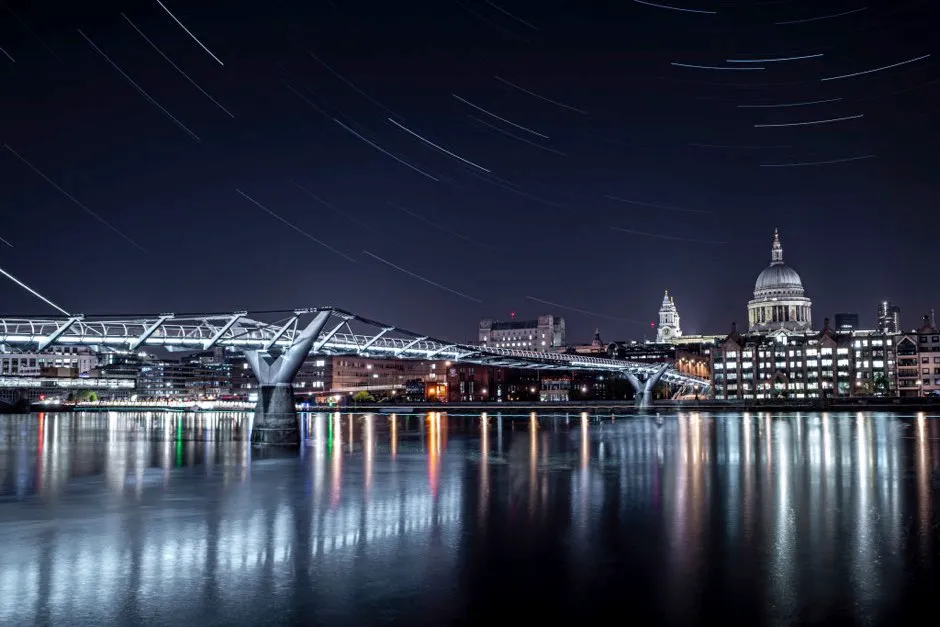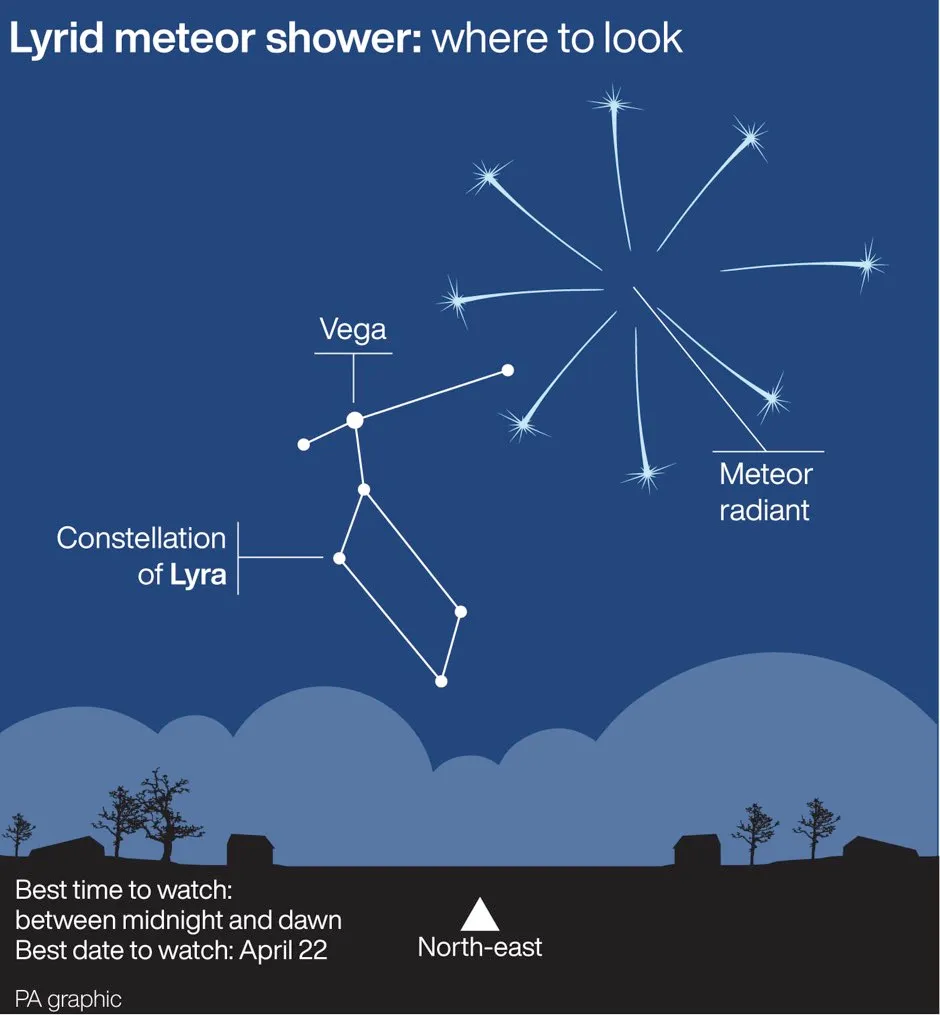Stargazers can look forward to catching the Lyrid meteor shower on Tuesday night, with up to 18 meteors expected to light up the night sky every hour.
The celestial display is expected to peak on the night of 21 April and will be visible until the early morning of 22 April.
Meteor showers, or shooting stars, are caused when pieces of debris, known as meteorites, enter Earth’s atmosphere at speeds of around 43 miles per second, burning up and causing streaks of light.

The Lyrids takes its name from the constellation of Lyra the Harp, where the shooting stars appear to originate from.
The meteors are pieces of debris falling from the Thatcher Comet, which is expected to return to the inner Solar System in 2276, after a 415-year orbital period.
Read more about asteroids and meteors:
- Crystals trapped in meteorites reveal the Sun’s violent past
- Top tips on how to photograph the Perseid meteor shower
- A beginner’s guide to meteor showers [via BBC Sky at Night Magazine]
- How to photograph a meteor shower [via BBC Sky at Night Magazine]
Tania de Sales Marques, an astronomer at the Royal Observatory Greenwich, told the PA news agency: “Comets are basically dirty iceballs that heat up as the comet approaches the sun, releasing dust and gases into space, and if the Earth, as it moves along its orbit around the sun, encounters these clouds of dust, then we get a meteor shower.”
“In order to see a meteor shower one must be somewhere shielded from city lights.
“The Moon will be in its waning crescent phase which means that we will have a nice dark sky.
“We might see up to 18 meteors per hour and maybe even the occasional fireball.”

Those waiting to catch a glimpse of the meteors will also be able to spot Vega, which is Lyra’s brightest star.
Ms de Sales Marques added: “To observe the peak of the Lyrid meteor shower, we should look to the right of Vega once it has risen in the north-east direction after 20:00 BST.
“However, we might get a better chance of spotting meteors later on at night.
“Vega will have moved across the sky towards the south and will also be higher up, making it easier to find it.”
The Lyrids occur between 16-25 April every year.
Reader Q&A: How do we predict meteor shower intensity?
Asked by: Simon Foster, Burnley
Most ‘predictions’ of the rate of meteors per hour during meteor showers are based on both theory and observation. Essentially, a computer model is built containing the trajectories of every known comet – since it is the debris from comets that forms the ‘stream’ of particles we see during a meteor shower.
This model contains information on the rate that these comets release material, along with the sizes, directions and velocities at which they are released, as well as the gravitational forces that determine their subsequent trajectories through space. The trajectory of the Earth and the conditions of the Earth’s atmosphere are also inputted into the computer model.
By watching how Earth moves through the meteor stream it is possible to estimate the likely number of meteors that will be visible during a given shower for a given location. But different astronomers use different models. Plus, these models are partly based on difficult measurements of the meteoric particles in the Solar System, so their predictions are often only approximate. But generally, they can be used to reliably predict when a meteor shower is likely to be more or less intense than the average.
Read more:
